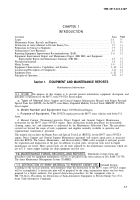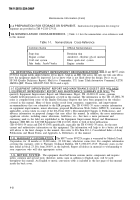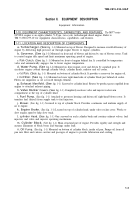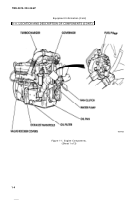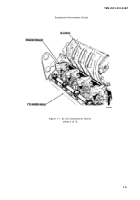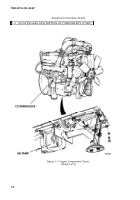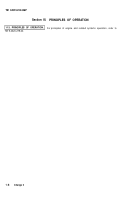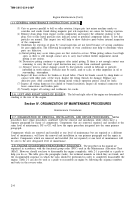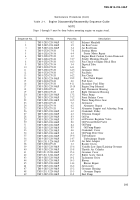TM-9-2815-224-34-P - Page 35 of 554
TM9-2815-224-34&P
Engine Maintenance (Cont)
b.
Follow these cleaning instructions when working on the engine.
WARNING
(1)
(2)
(3)
(4)
(5)
(6)
(7)
●
●
Dry cleaning solvent, PD-680 Type II is flammable and toxic. Skin and eye
protection is required. Good ventilation is required. Keep away from open
flame or sparks.
Compressed air used for cleaning and drying purposes will be reduced to 30 psi
(207 kPa) and used only with adequate chip guarding and personal protection
equipment.
Soak parts in dry cleaning solvent, and wash away deposits by sloshing or spraying. When
necessary, brush with a soft bristle brush (not wire) moistened in dry cleaning solvent. Use
of dry compressed air to dry parts, except bearings, after cleaning. Bearings must drip and
dry.
Do not use wire brushes, abrasive wheels, or compounds to clean parts, unless specifically
a jet
air
approved in the detailed instructions. Dimensional characteristics ‘of machined surfaces can be
altered, and may weaken a highly stressed part.
Do not clean rubber parts in dry cleaning solvent. Wipe clean with a clean, dry, lint-free cloth.
WARNING
Trichloroethylene is toxic to skin, eyes, and respiratory tract. Avoid all exposure.
Skin and eye protection, and exhaust hood are required. Contact safety officer
for local procedure regulations concerning the use of trichloroethylene before
using.
A decreasing tub may be used to remove heavy grease and oil from metal parts.
Trichloroethylene is used as a decreasing agent.
CAUTION
To prevent corrosion, parts should be dipped in rust preventive (Item 24,
Appendix C) within two hours of decreasing.
Remove parts from decreasing machine, and check all oil passages and cavities for cleanliness
and freedom from obstructions before coating with rust preventive. Run a thin, flexible wire
through oil passages to make sure they are not clogged. Use a pressure spray gun and dry
cleaning solvent to clean dirty passages.
Parts soaked in carbon removal solution should be rinsed with dry cleaning solvent. Rinse in a
solvent spray booth equipped with a filter and hand spray gun, then use a soft bristle brush to
remove carbon deposits. A cloth buffing wheel may also be used.
Electrical parts, such as coils, junction blocks, and switches, should not be soaked or sprayed
with cleaning solutions. Clean-these parts with a clean lint-free cloth moistened with dry
cleaning solvent.
C.
Follow these inspection instructions when working on the engine.
(1) Inspect all surfaces in contact with gaskets, packings, or seals for nicks and burrs which might
damage the new seal upon assembly. If any defect is found, remove it before assembly.
NOTE
Defects which may cause bearing binding or misalinement are cause for rejection.
Nicks or gouges outside race load areas are not cause for rejection.
(2) Inspect bearings for rusted or pitted balls, races, or separators. Inspect balls and races for
abrasion and serious discoloration.
2-3
Back to Top

